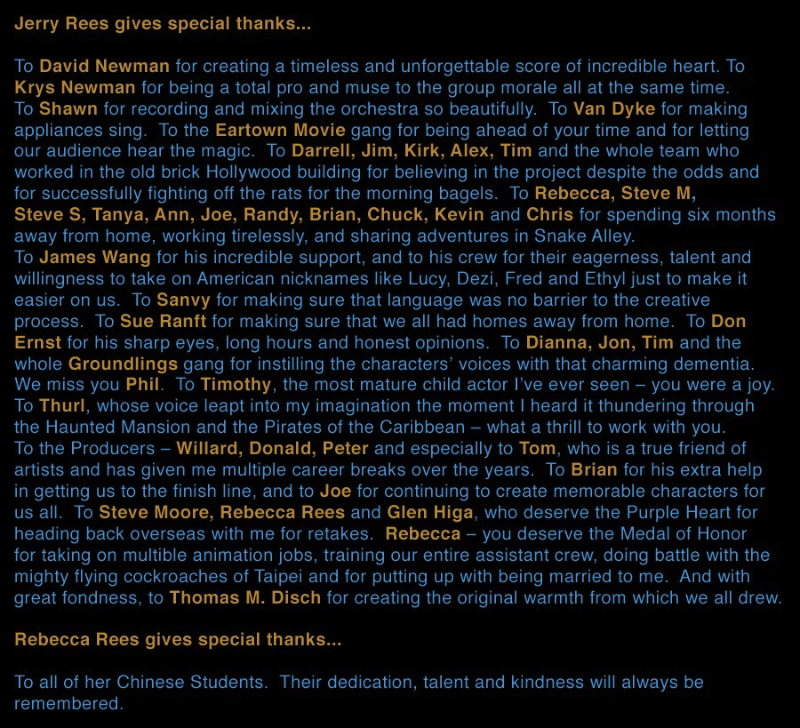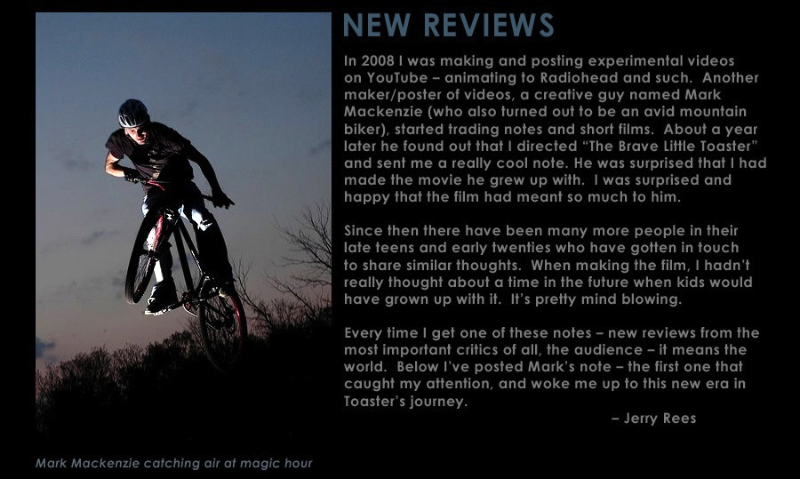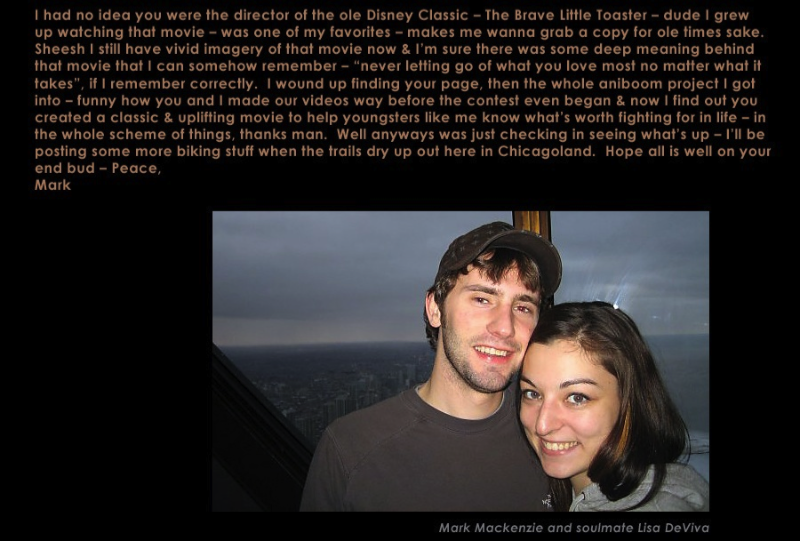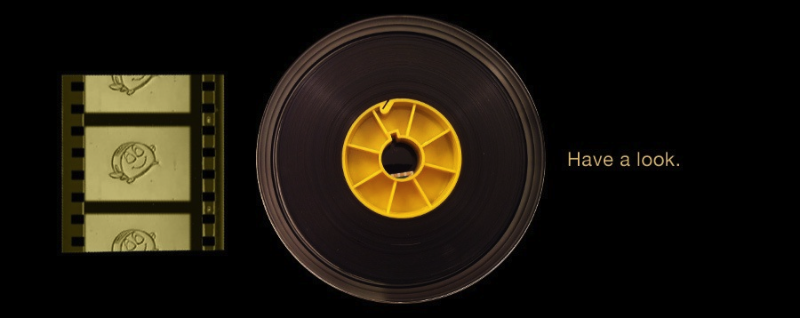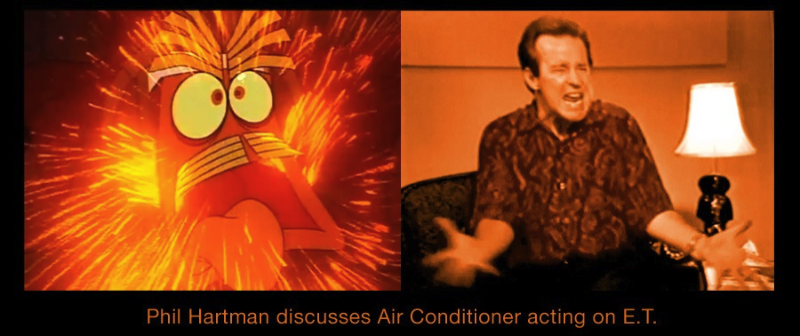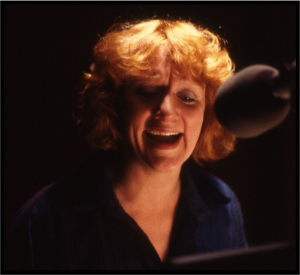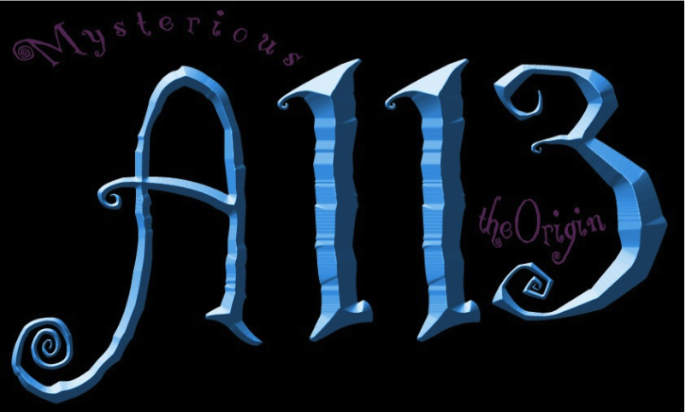
Directed
by
Jerry Rees
Screenplay
by
Jerry Rees & Joe Ranft
Story Development
by
Jerry Rees, Joe Ranft, Brian McEntee
Based on the Novella
by
Thomas Disch







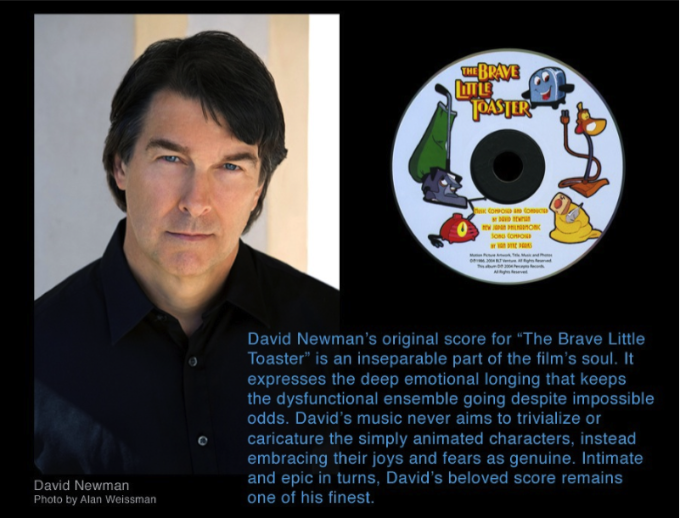
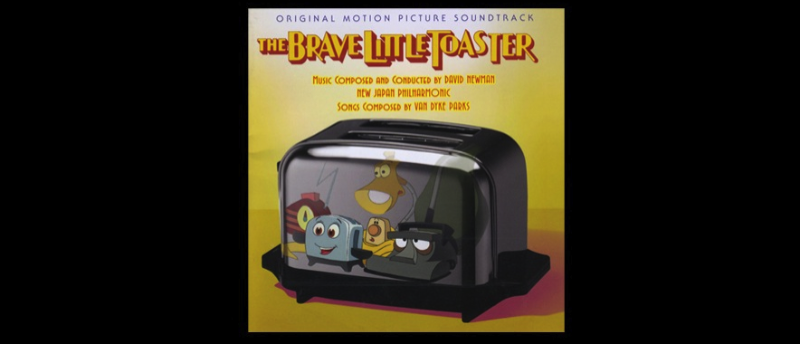

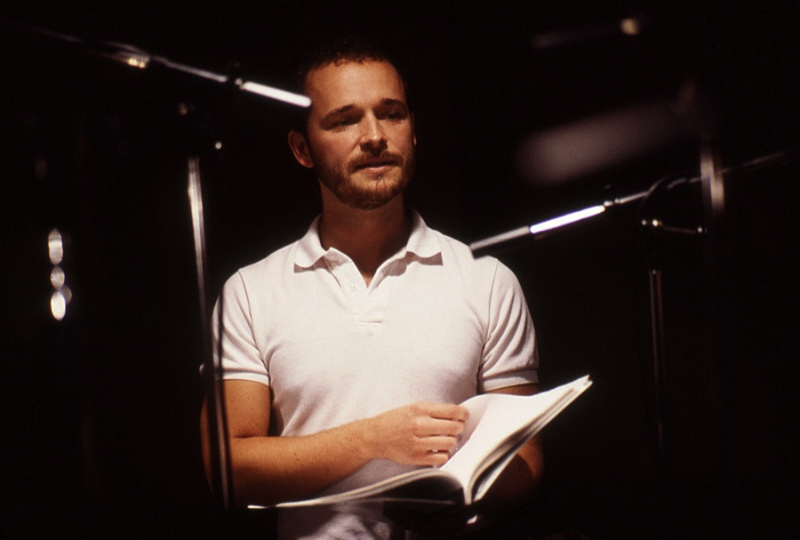
Jerry Rees directing an ensemble voice session.
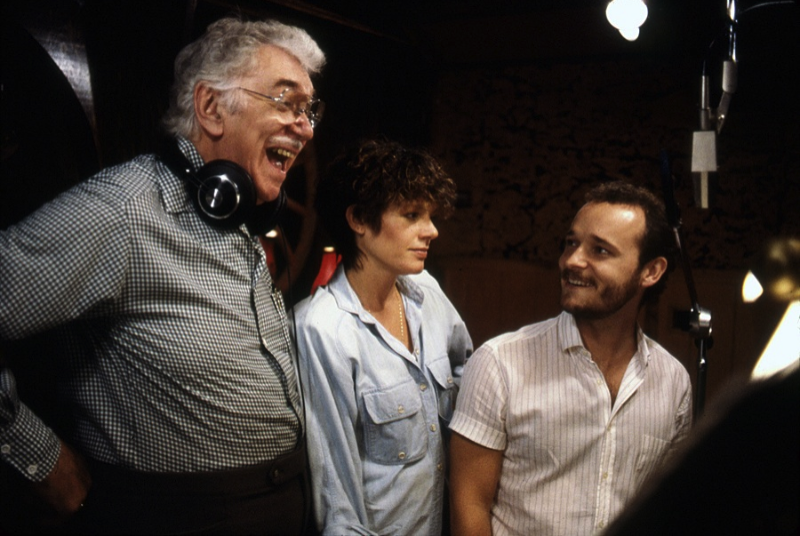
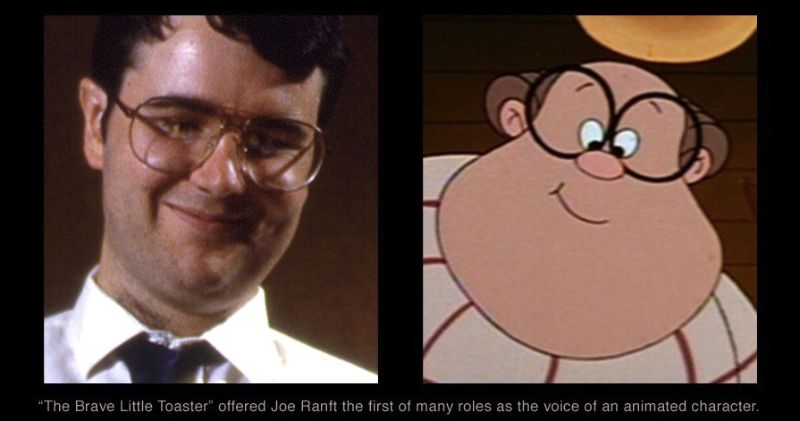
excerpt from interview by Daniel Schweiger

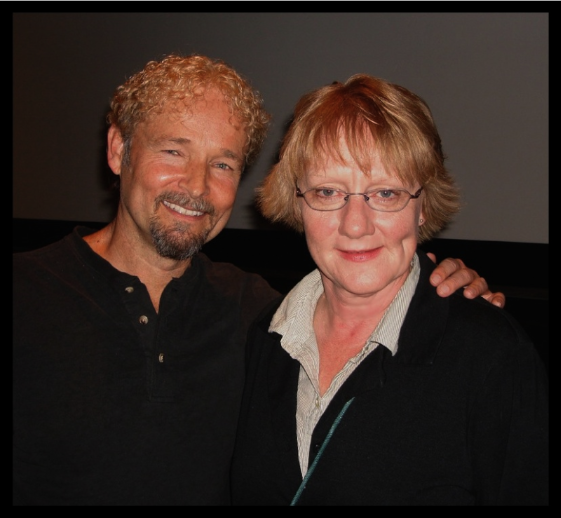
Jerry Rees and Deanna Oliver (voice of the Toaster), reunited in 2010, 25 years after their original recording sessions for The Brave Little Toaster. The occasion was a screening of the film at Cal State Northridge, hosted by Michael Floyd, where students engaged Jerry and Deanna in a memorable Q&A.
Watch the Q&A
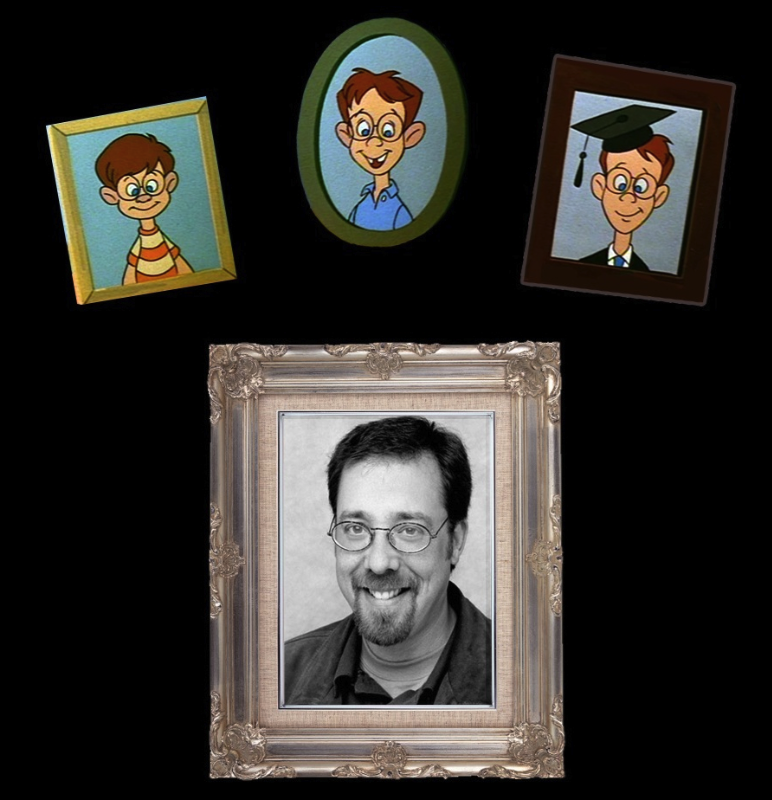
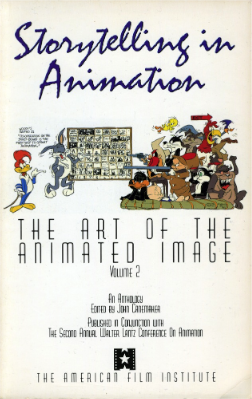
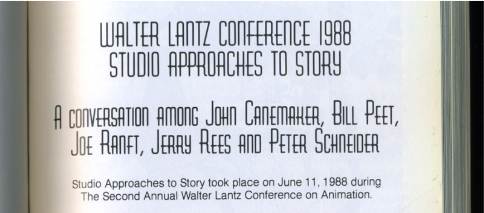
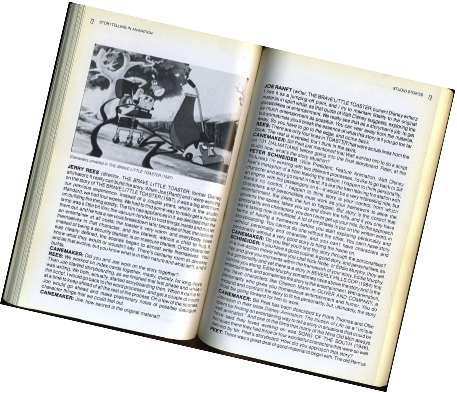
An excerpt from the resulting book (shown above) is presented below.
CANEMAKER: Jerry, how important is personality in storytelling?
JERRY REES (director, THE BRAVE LITTLE TOASTER, former Disney animator): It can really build the story. When Joe [Ranft] and I were working on the story of THE BRAVE LITTLE TOASTER (1987), it was a big shift from our previous experience. Instead of a couple years, which is the studio standard, we had four weeks. We had to find some way to really get a handle on building the thing solidly. The film has appliances in it; we decided that the lamp was a little bit dim; the vacuum tended to hold things inside and not let them out, and he has a nervous breakdown later because of that; the radio is an entertainer at all costs; the toaster's very warm, and everybody sees themselves in that character; and the blanket, without a child to hug it, instead of being a security blanket, is an insecure blanket. Once character was clearly defined, the scenes began to almost write themselves. You knew what they would or wouldn't say. There's certainly room to develop and let that evolve, but you know what is in their nature and what isn't, and it builds.
CANEMAKER: Did you and Joe work on the story together?
REES: We worked on index cards together, madly, quickly, for long days. Then Joe started storyboarding, as we finished that first phase and while I was writing. We both, actually, started storyboarding then. When it came to the script, I would go back to the word processor, and get a couple of hours at a time to keep ahead of all the rest of the process. On a few of the scenes Joe would go ahead and make preliminary notes of possible dialogue, character things that we could feel out.
CANEMAKER: Joe, how sacred is the original material?
JOE RANFT (writer, THE BRAVE LITTLE TOASTER, current Disney writer): I see it as a jumping-off point, and I try to maintain fidelity to the original material in spirit while, as that quote of Walt Disney suggests, exploring the possibilities of entertainment. We really see that as a storyman's job: to get as much entertainment as possible. You can veer away from the material, but sometimes you'll break the essence of what this story is if you go too far away. So you have to go to the edge, and come back.
REES: There are only four lines in TOASTER that were actual lines from the book. The rest is invented, but I think in the spirit.
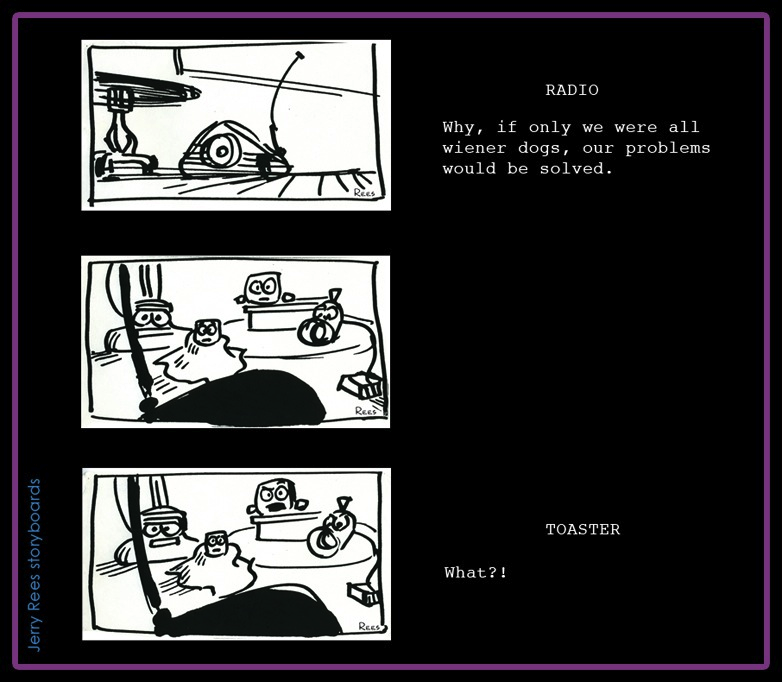
But because Rees reworked the story structure and content (such as adding the notion of a kid "master" whom the appliances loved) with Joe Ranft and Brian McEntee, then wrote a screenplay from scratch, EVERY STORYBOARD for every shot in the entire film also had to be generated from scratch. Because the schedule was so short, Alex Mann, Darrell Rooney, Joe Ranft and Jerry Rees had to keep storyboards very rough, but strove to convey specific intentions within those roughs.
More about Toaster storyboarding, and how roughs compare to the final film HERE.
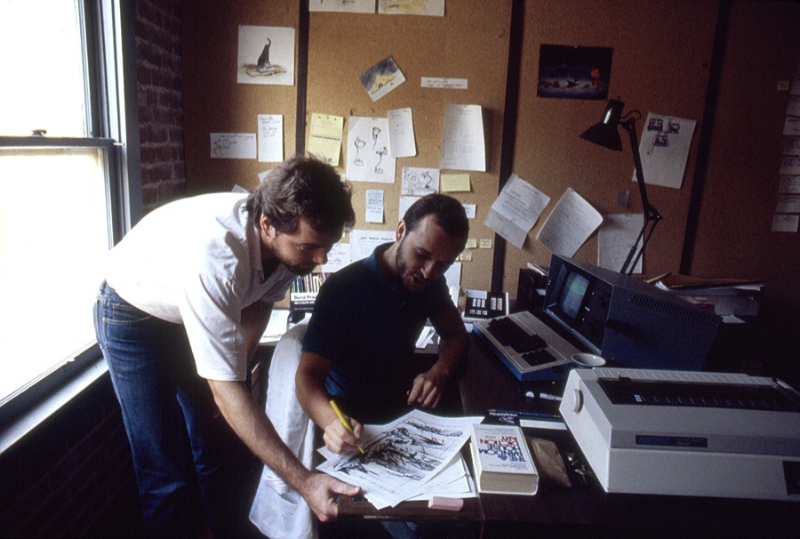
Jerry Rees, sitting at his 1985 Kaypro portable computer, pauses writing the Toaster screenplay to review a rough layout with Darrell Rooney.
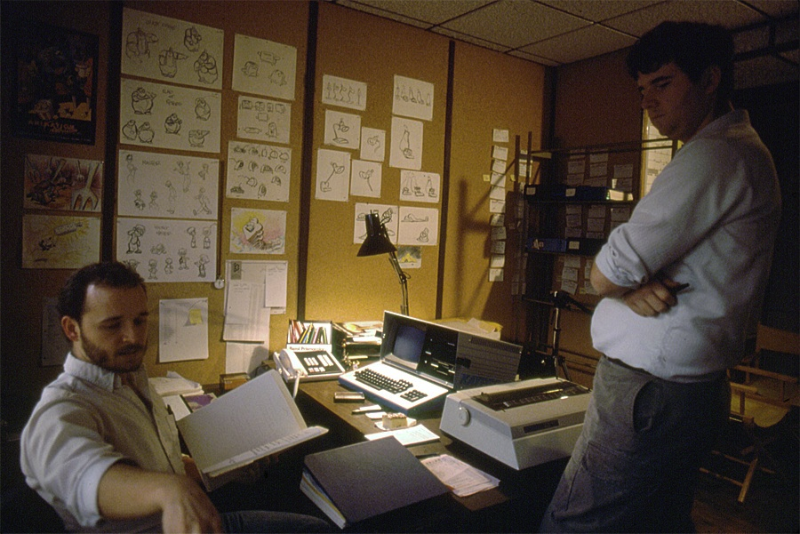
Jerry Rees and Joe Ranft share thoughts on the latest boards.
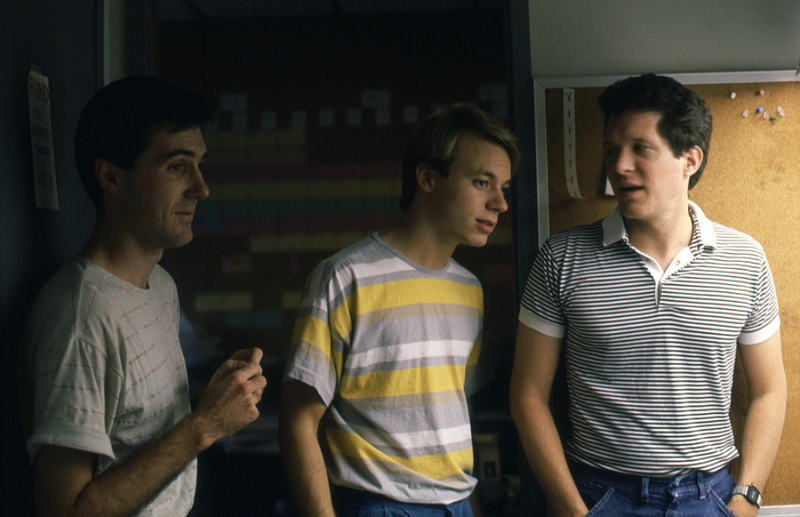
(left to right) Animator Kirk Wise, animator Kevin Lima and Art Director Brian McEntee anticipate a presentation.

Production manager Chuck Richardson (left) and storyboard artist Alex Mann put in some late night hours.
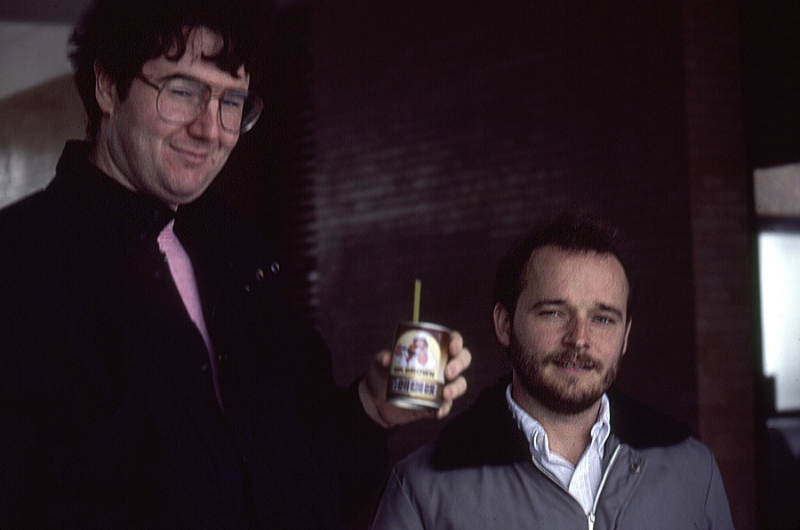
Joe Ranft shows off Chinese writing on his pop can as he and Jerry Rees arrive in Taiwan for a six month phase of the Toaster production.
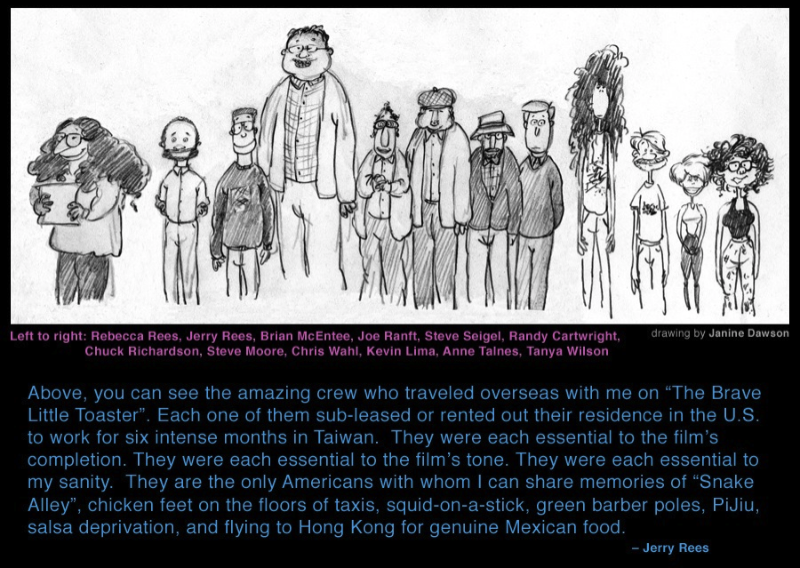
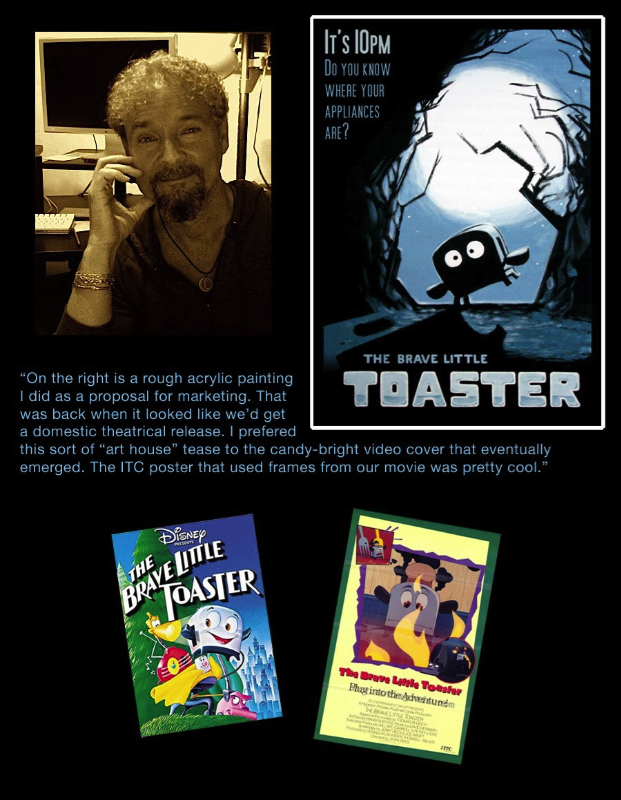
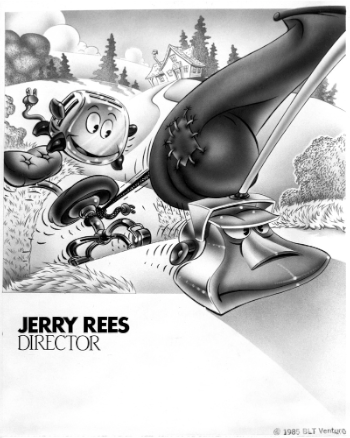
The sign on Jerry Rees' door at the McCadden Place Studio in Hollywood, 1985
